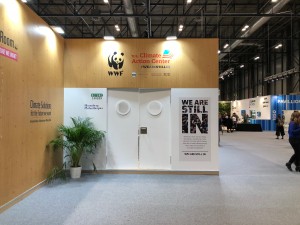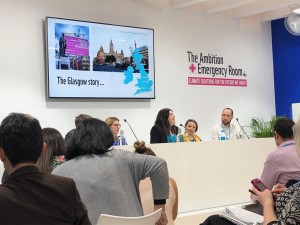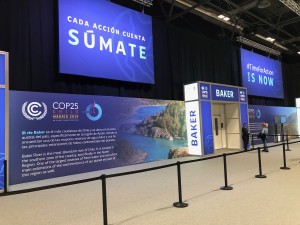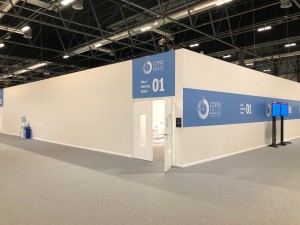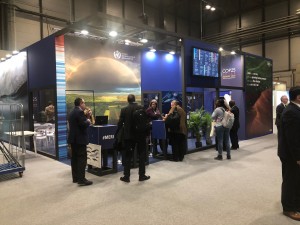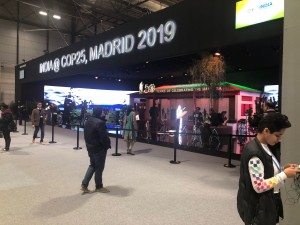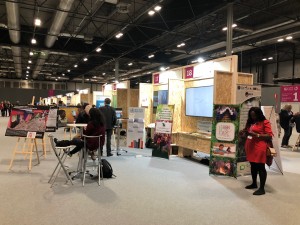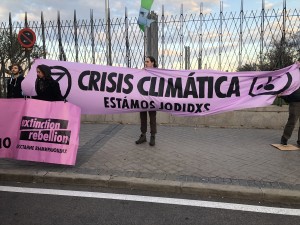Hi everyone! Today marks the end of our time at COP 25 and on this blog, facts that may result in sadness for some and relief for others. Luckily, Swarthmore will be sending another delegation for week two of the conference, so those of you enjoying our posts should look forward to hearing from Chris, Nancy, and Isabel!
This morning, I attended the opening of the US Climate Action Center at the WWF pavilion. The US Climate Action Center hosts the #WeAreStillIn delegation, a network of subnational government, tribal, business, college, healthcare, and cultural professionals committed to collaborative climate action in the U.S. The work of the #WeAreStillIn campaign operates in direct opposition to the current federal administration’s anti-environment position and policies.
From today until next Tuesday, leaders from the #WeAreStillIn delegation will present best practices, models, and frameworks for continuing and furthering climate action in a number of sectors across the U.S. The coalition represents nearly 70 percent of U.S. GDP and 65 percent of the U.S. population and thus forms a powerful voice in mobilizing U.S. society to enact policies and programs to promote the green economy and limit our carbon output.
The #WeAreStillIn campaign is also committed to engaging with foreign leaders and delegates at the COP in a (seemingly) more meaningful and collaborative way than our State Department delegation. They are working to bridge the developed/non-developed divide and provide funding sources for cities and regions in developing countries.
As much as I am not proud of our federal climate policies, I am proud that so many of our civic and industry leaders recognize the urgency of the climate crisis and are forming coalitions to mobilize support for and further climate action.

